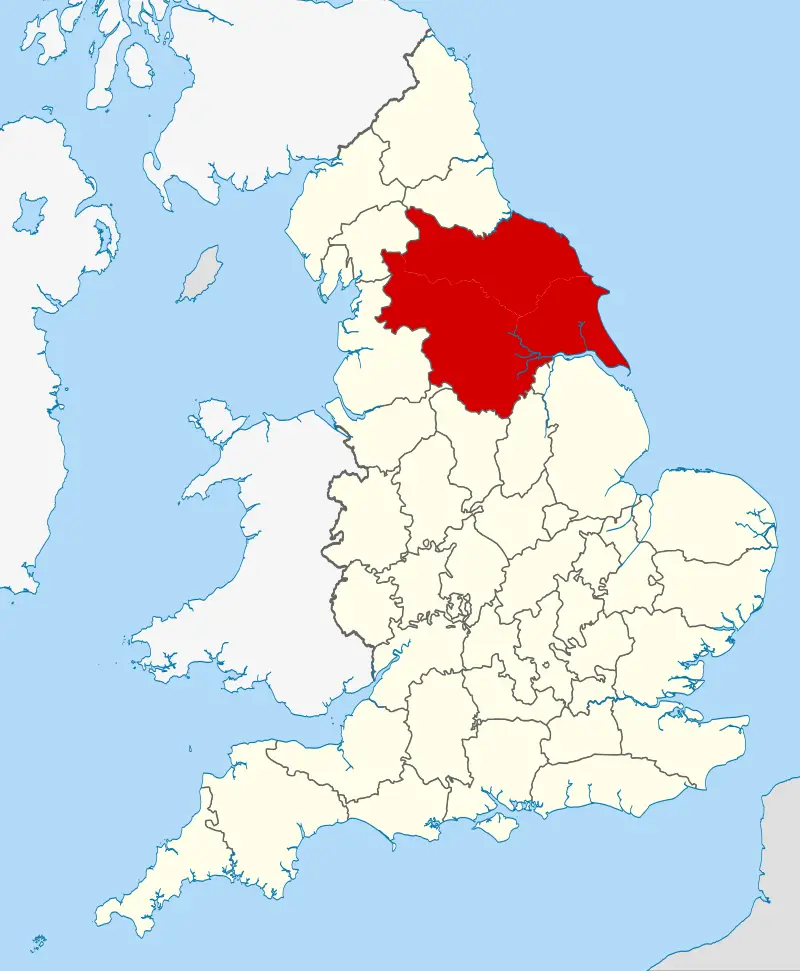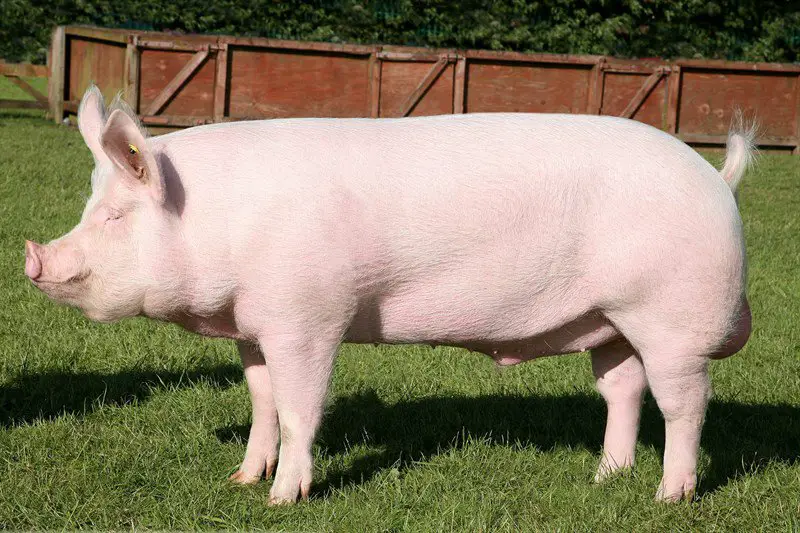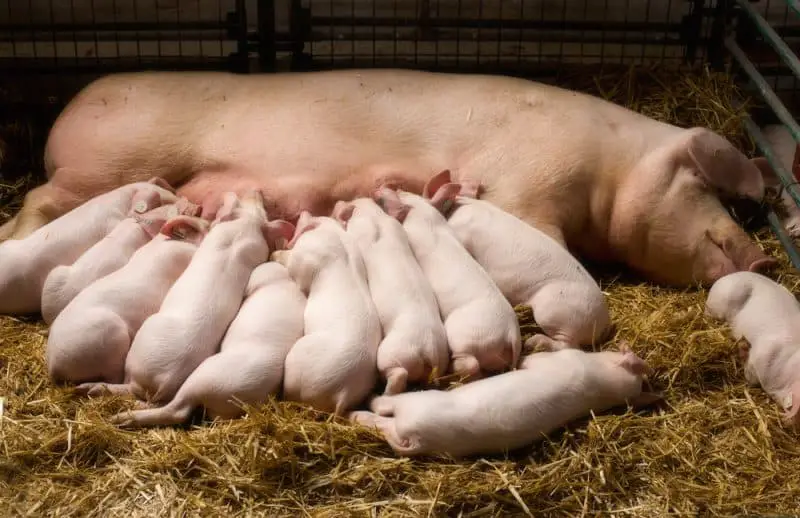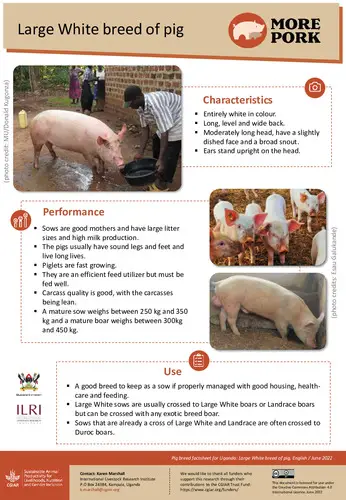Welcome to our informative content on the Large White Pig Breed, a fascinating species both in terms of its historical ancestry and its unique physical and behavioral traits. As you delve deeper, you will discover the fascinating journey of this breed’s development that shapes its formidable presence in today’s porcine world. We will unreel the intriguing aspects of its origin and disparities this breed possesses in comparison to its kin.
We will traverse through the distinctive physical features which set this breed apart, and discuss the behavioral tendencies and productivity aspects that make it an interesting subject for farmers and breeders. Lastly, we will navigate the complex terrain of genetics and breeding practices associated with the Large White Pig Breed, simplifying the principles behind its hereditary structures and how breeders ensure the best traits are retained in ongoing generations.
Historical Background of the Large White Pig
Historical Background of the Large White Pig Breed
The Large White Pig breed originated in Yorkshire, England, during the 19th century. Coincidentally this is also where the Yorkshire breed is from. This breed came into existence as a result of selective breeding, which focused on producing a robust pig breed capable of providing high-quality meat. Breeders often prioritized traits associated with significant meat production and efficient feed conversion rates.
The crossing of native white pigs of the time and a Large White Pig from Chinese and Neapolitan stock was more than likely the foundation of the modern Large White Pig breed. The comparison between the sizes of the native pigs and the Large White Pigs imported from China led to its common name, Large White. The breed gradually gained recognition and was officially recognized as a breed in 1868 by the Yorkshire County.

In the late 19th and early 20th centuries, the breed was exported across the globe due to its high adaptability to a range of climates and management systems, high fecundity, and impressive growth rates. It remains one of the most popular pig breeds globally and contributes greatly to commercial pig production today.
Understanding the Large White Pig Breed Characteristics
The Large White Pig stands out due to its unique physical characteristics. They possess a moderately elongated body, a slightly dished face, a wide back, and deep sides, underlining their robust structure. Their most striking feature, however, is possibly their white skin and hair, paired with erect ears. Despite their appearance of light-boned structure, these pigs are considerably robust.
These Large Whites are known to adapt very well to diverse conditions, rendering them suitable for either small-scale or extensive commercial pig farming across the globe. This flexibility has partly aided their widespread dispersion beyond their native United Kingdom.
Renowned for its reproductive abundance, the Large White pig breed exhibits superior maternal instincts, including the capability to produce large litters and a long span of productive life. These pigs bear piglets that show exceptional growth rates and high lean meat yield, making them very favorable for commercial purposes.
True to their roots, Large White Pigs are adept at thriving in outdoor systems but have also shown successful adaptation to more intensive systems, thanks to their calm disposition and ease of management.
The impact of this breed has been significant in the global pig industry, lending its genetic material to the creation of new breeds and augmenting hybrid vigor through cross-breeding. The breed’s highly desirable traits such as efficient feed conversion, superior growth rates, large litter sizes, and sturdiness are sought after in crossbreeding programs to boost commercial pig production.

Physical Characteristics of the Large White Pig
Just as the name implies, the Large White Pig breed draws attention with its large size and uniform, pure white color. Fulfilling their name, these pigs are known as significantly large, with mature males weighing as much as 350-375 kg and females weighing around 280-300 kg. Even with their large size, they hold an incredible lean meat to fat ratio, which is largely attributed to their genetically influenced, streamlined body shape.
The personality of these pigs is just as unique as their appearance. They have a long, slightly dished face that supports their perked up ears, marking it a distinctive feature of the breed. The breed’s sturdy legs and strong feet adapt easily to different ground types, proving their versatility on hard and soft terrains alike. A long, wide, and straight back segues into a deep body with a high underline, thereby yielding larger quantities during processing.
Large White sows stand out for their excellent milking ability and are known for being nurturing mothers, typically giving birth to 10 to 12 piglets per litter. Testament to their robustness and hardiness, this breed exhibits high adaptability, thriving amidst diverse environmental conditions while exhibiting high longevity.
Behavioral Traits and Productivity of the Large White Pig
The Temperament and Habits of the Large White Pig Breed
The Large White is celebrated for its calm and friendly nature. These pigs are known to form bonds with their caregivers, showcasing a blend of curious and sociable behaviors’. They have a hearty appetite and are not choosy eaters, willing to consume a variety of foods without fuss. Their excellent foraging abilities make them adept at rooting out diverse types of food resources from the environment, adding to their appeal as a breed.
Productivity Traits of the Large White Pig Breed
Fertility in the Large White pig breed is relatively high, making them desirable for pig farming businesses. The females, known as gilts until they have their first litter, are particularly fertile. They reach sexual maturity early and can produce around two litters per year, typically giving birth to about 10-12 piglets every time.
This breed has a robust health profile and a longer lifespan compared to other pig breeds, living up to 6-10 years when given appropriate care. This longevity also contributes to increased production yields over their lifetime.
The meat quality derived from the Large White pig breed is of remarkable significance. They are primarily raised for their lean meat, which is highly desired in various pork markets. The carcass yield is comparatively high and is characterized by high-quality cuts, like the loin.

Special Traits of the Large White Pig Breed
Large Whites have a unique appearance, with a long, lean body, a broad back, and a slightly dished face. They earned their name from their large frames and, of course, their white coloration. They’re also noted for their erect ears, a trait that distinguishes them from other breeds whose ears usually droop.
Another unique trait of the Large White pig breed is their adaptability. They are robust and hardy animals, able to endure various climatic conditions. This hardiness extends to their ability to live comfortably in either indoor or outdoor environments, making them an excellent choice for different farming systems.
Genetics and Breeding Practices of the Large White Pig Breed
The Genetic Advantages of Large White Pigs
Known in the United States as Yorkshire pigs, the Large White pigs are readily identifiable by their robust disease resistance and high fertility – unique genetic characteristics of the breed. The Yorkshire pig’s splendid adaptability across various environments and under divergent climatic conditions has reinforced its reputation in meat production. These pigs showcase a distinctively higher resilience and an unparalleled ability to graze when compared to other pig breeds, complying with their genetically superior attributes.
Effects of Genetic Variations on Large White Pigs
Genetic variation in Large White pigs plays a pivotal role in traits such as weight gain, reproductive ability, and overall health. Breeders carefully monitor these variations not only to maintain quality but also to improve the breed’s adaptability and productivity. For example, traits linked to faster growth or increased litter size may be favored during selective breeding and passed on to future generations. At the same time, genetics also influence negative variations, which breeders try to minimize through responsible breeding practices.
Breeding Practices
Breeding practices for Large White pigs aim to balance preserving the breed’s valuable genetic traits while also maximizing productivity and disease resistance. Breeders utilize a combination of traditional methods, including selective breeding, and modern technological advances, such as artificial insemination. Traits such as size, growth rate, resistance to diseases, and efficiency of feed conversion are some of those being selectively bred for.
Modern Technological Influences
Modern technology facilitates easier and more efficient breeding process for Large White pigs. For instance, artificial insemination enables breeders to regulate genetic material exchange, thereby assisting in controlling the breed’s health and productivity. Moreover, genetic sequencing and genome mapping offer breeders an extensive understanding of the genetic structure, allowing them to identify desired and undesired traits and manipulate breeding accordingly.
Effects of Inbreeding
While some degree of inbreeding is common in maintaining certain desirable traits, excessive inbreeding can result in decreased diversity and potential health issues. In Large White pigs, this can lead to reduced fertility rates and growth rates, also known as inbreeding depression. Breeders mitigate the risks of inbreeding by bringing in unrelated breeding stock, contributing to a balance of preserving the breed and avoiding negative consequences of excessive inbreeding.
Preservation of the Large White Pig Breed
Preserving the Large White pig breed entails a meticulous focus on sustainable breeding practices that safeguard the breed’s genetic diversity. Restrictions to excessive inbreeding, introductions of new gene pools, and advanced technology utilization have all proven beneficial in this regard. Furthermore, preserving this breed’s characteristic traits parallels preserving their ability to contribute significantly to high-quality meat production; thus, preservation is equally important for both environmental and economic reasons.
Conclusion
In this exploration of the Large White Pig Breed, we have journeyed through the recesses of its history, unraveled unique physical characteristics, and brought to the fore various behavioral traits and productivity variables. We have also demystified the complex world of genetics and breeding practices that ensure the preservation of this breed’s best traits.
You can now appreciate how this breed, with its distinctive attributes, continues to be a major contributor to modern pig farming, playing a significant role in agricultural diversity and economic vitality. As we imagine the future of the Large White Pig Breed, we thought-provokingly reflect on its potential impact, and thus, continue to be captivated by this remarkable breed.

Credit: CGSPACE